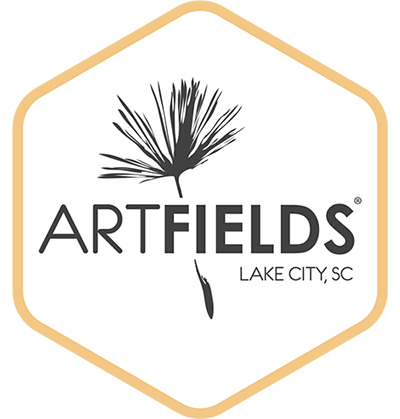February 21, 2020
Q & A with Jamey Grimes
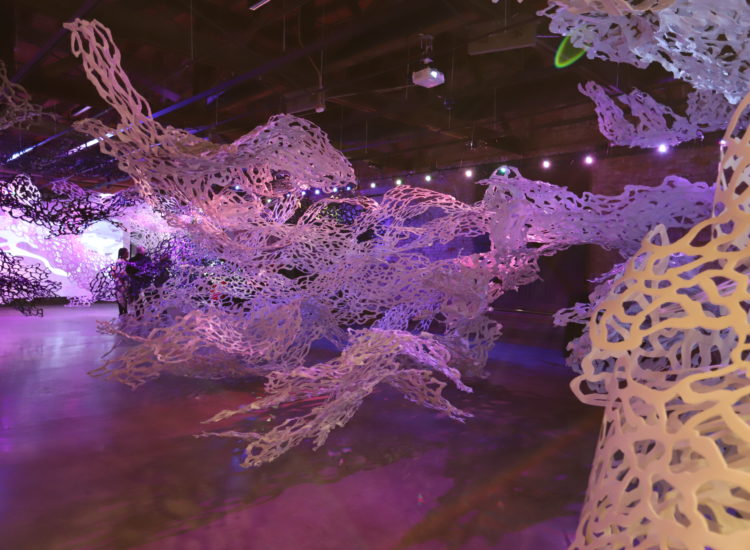
In Formicarium, plastic surfaces accumulate to form tunnels of light and shadow. Colors change over time, dynamically shifting the viewer’s interpretation of depth and form. A formicarium is a technical term for an ant farm. In this installation, the Jones-Carter gallery is transformed into a box full of tunnels, to be explored by humans, rather than ants. The carved and melted texture of the plastic walls might imply a network of tunnels at a smaller scale.
Jamey Grimes answered some of our most popular questions about Formicarium so that visitors could further enjoy the exhibition in Jones-Carter Gallery. Click HERE to learn more or stop by Jones-Carter Tuesday through Saturday from 11AM-5PM.
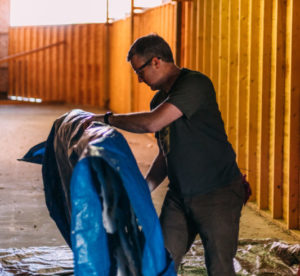
How do you transport your materials?
The multiple plastic sections come apart and stack up nicely. I wrap them in bundles, and they can then be easily carried around. Luckily, the plastic is very lightweight and durable. There are approximately 400 pieces of plastic in Formicarium, and they all fit into a small enclosed cargo trailer.
Where do you find the plastic?
I source plastic sheets from a distributor near my home in Alabama. The Coroplast material is typically used as a sign plastic, or for things like the crates seen at the Post Office. While I consider my quantities to be high, my supplier typically works with clients to provide hundreds or thousands of sheets at a time. They are kind enough to work with a local artist as well!
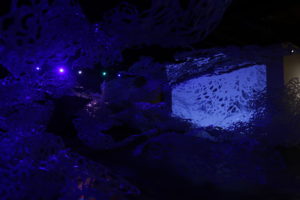
How do you program the lights?
The lighting system utilizes DMX controlled LED lights. The system is traditionally employed for theater lighting, and can be programmed digitally to allow for multiple variations. Once the system is set up, I can experiment with a variety of lighting combinations. In Formicarium, I was particularly interested in extreme variations. Colors shift over time, and certain moments allow for a particularly darkened gallery. The multiple white walls provide an excellent surface for dynamic shadow play, and incorporated projection works with the cycling LED lights.
What was your inspiration to start in this art form?
I enjoy working with abstract forms, and have explored a variety of designs that helped lead to the large installations of melted plastic. Inspiration definitely comes from the natural world. I am fascinated by patterns observed in clouds, trees, and water surfaces. I’m also very interested in how these patterns shift in scale. During my undergraduate studies, I spent many hours looking at plankton through a microscope. The tiny world began to invade my dreams; I’ve always enjoyed a cross-over between real observations and dreamlike imaginative spaces.
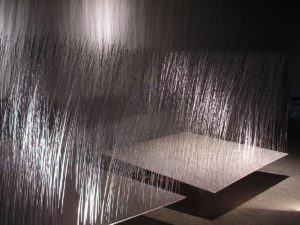
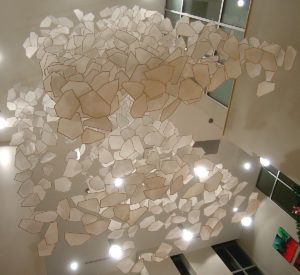
Do you work in any other mediums?
I do! I am underway with my first large-scale aluminum sculpture for an outdoor garden space. I create a lot of smaller sculptures carved from wood. I have also created many installations using other plastics, paper, wire, and projection. Similar themes run between much of my work, but some use more geometry in their design.
Learn more about Jamey HERE and his exhibition in Lake City HERE.
